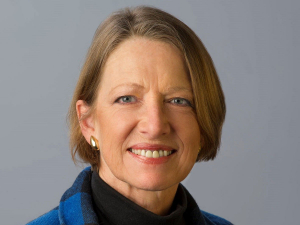Alliance commissions major heat pump system at Mataura, cutting coal use and emissions
Alliance Group has commissioned a new heat pump system at its Mataura processing plant in Southland.
 Dr Jacqueline Rowarth, Adjunct Professor Lincoln University, is a farmerelected director of DairyNZ and Ravensdown.
Dr Jacqueline Rowarth, Adjunct Professor Lincoln University, is a farmerelected director of DairyNZ and Ravensdown.
OPINION: Confusion abounds in the discussion about agricultural greenhouse gases (GHG) and misinformation is rife.
Well-meaning people are muddling metrics, targets, reporting, science and policy. The result is that a conversation about a particular component becomes a conclusion about another. The outcome could be extremely detrimental for the agricultural community.
What is at stake is the way we are taxed for biogenic emissions - the emissions to do with animals. Fuel use is already taxed through the emissions trading scheme (ETS). Fertiliser will be brought in.
What is sometimes overlooked is that agriculture is already in the ETS but has been given 100% free allocation until 2025. After that, we will be included at 95%, decreasing 1% a year until 2030, and by 2050 we will be entirely included.
The ETS is linked to the carbon price determined by demand for NZU's from other sectors of the economy.
This means costs for farmers will continue to increase each year despite progress made towards agriculture reduction targets. Estimating what might happen by 2050 is not easy, statements that agriculture would be better off in the ETS than any alternative are difficult to understand.
The alternative is what agriculture has been offered through what is now known as He Waka Eke Noa (HWEN).
If the industry can agree on a system that will encourage a reduction in methane, be equitable across different sectors and allow businesses to be financially viable, the Government will consider it.
What is already in law is the fall back of the ETS. Also in law, but not part of the ETS, is the split-gas approach which allows short-lived (methane) and long-lived gases (carbon dioxide and nitrous oxides) to have separate targets and be reported separately.
The split gas approach was the result of considerable work from levy bodies and Federated Farmers. Similarly, acceptance of a target of 10% reduction by 2030 was a claw back from what might have been imposed. The agreement allowed time for more research and included government re-assessments of progress at regular intervals through the Climate Change Commission.
Anybody making statements about ‘giving in’ and ‘not fighting hard enough’ doesn’t understand the alternative.
Another muddle in the discussion is the metric for reporting. The Zero Carbon Act stipulates that the GHG budgets have to be reported in GWP100. This is in line with the global agreement. Countries can choose to report gases in other ways as well, but GWP100 is the global standard for the Inter-Governmental Panel on Climate Change (IPCC). The ETS is based on the quantity of carbon dioxide equivalents produced in GWP100.
There is increasing global interest in the GWP* metric but the calculation requires a time series and GWP* isn’t suitable where the time series fluctuate – where animal numbers change, for instance. This means that it isn’t yet appropriate for farm-scale reporting; more research and development is necessary.
The split-gas approach renders debate about metric unnecessary because the reporting and targets are different for different gases.
The real argument for farmers should be on the economics.
What would the ETS mean for your business?
If you ‘know your number’ (the GHG in carbon dioxide equivalents for your farm), you can multiply it by the current carbon price ($68.50 per unit at the end of 2021). When you’ve recovered, you can consider the alternative being proposed by the industry bodies.
The HWEN proposal enables methane to be treated differently and allows more offsets through trees and riparian planting than the ETS. It means money collected can be invested for R&D or used as rewards to encourage further reduction in methane. And it is under industry control.
Exactly how it could work is the focus of discussions in the consultative process where feedback is incorporated, and more calculations are done. Check the websites of the industry bodies for workshop dates and for more information. And do the calculations for your business. Government needs to know the impact.
Dr Jacqueline Rowarth, Adjunct Professor Lincoln University, is a farmer-elected director of DairyNZ and Ravensdown. The analysis and conclusions above are her own. This email address is being protected from spambots. You need JavaScript enabled to view it.
The Coalition Government will need the support of at least one opposition party to ratify the free trade deal with India.
Primary sector leaders have welcomed the announcement of a Free Trade Agreement between India and New Zealand.
At Pāmu’s Kepler Farm in Manapouri, mating has wrapped up at the across-breed Beef Progeny Test.
More than 150 people turned up at Parliament recently to celebrate the 20th anniversary of Horticulture New Zealand (HortNZ).
Biosecurity New Zealand says Kiwis should continue to keep an eye out for yellow-legged hornets (Vespa velutina) over the holiday season.
Fonterra has slashed another 50c off its milk price forecast as global milk flows shows no sign of easing.

OPINION: The release of the Natural Environment Bill and Planning Bill to replace the Resource Management Act is a red-letter day…
OPINION: Federated Farmers has launched a new campaign, swapping ‘The Twelve Days of Christmas’ for ‘The Twelve Pests of Christmas’ to…